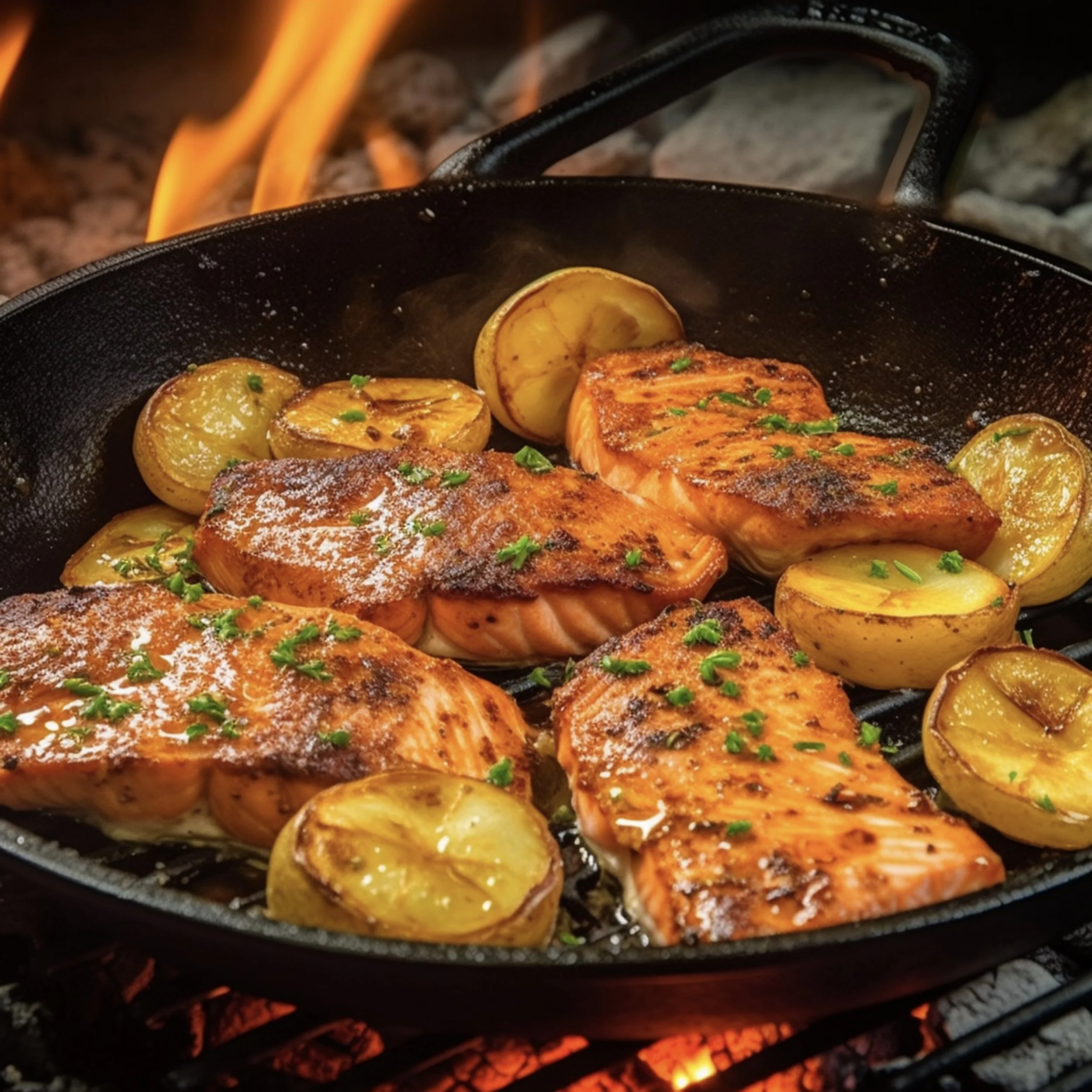Grilling, Roasting, and Sautéing – Just Right
Nature's Hearth Blog
Your Nourishing Kitchen
Select Your Favorite Farm Foods & Wild Harvest
&
Juice,
Blend,
Chop!
Making Meals with Traditional Foods
Adhering to the Principles of Holistic Health and WAPF Dietary Guidelines
Illustration by © Takan Kaewswangsap | Dreamstime.com
Grilling, Roasting, and Sautéing – Just Right
Lightly browning your food can enhance the color, aroma, and taste. This is best accomplished by
cooking at a low heat, generating millions of biochemical reactions (Schulze, 2023). As proteins,
fats, and carbohydrates break down into amino acids, fatty acids, and simple sugars, they meld into
an array of delicious flavors. Fine-tuning the temperature and moisture, the art of cooking involves
discovering combinations of foods that complement when cooked together.
Covering food keeps the moisture in. With the cover on, vegetables naturally contain enough water so they cook nicely at a low temperature in a small amount of ghee or olive oil. When food is uncovered, open to the air, this creates more crispiness and facilitates caramelization. Marinating seafood and meat aids in digestion and enriches the flavor. In a marinade with lemons or limes, the simple sugars attract the amino acids in the seafood or meat, intermingling savory flavors. Butter and cream can be added when cooking at a low heat or once the food is in your bowl or plate. Butyric acid is butter and cream’s satiating flavor molecule (Clower, 2022).
The caution of cooking with high heat is that it may result in burnt, charred, or blackened food. In this condition, the food can have harmful chemicals that may be carcinogenic, including acrylamide and/or heterocyclic amines (HCA). Fat or juices that drip into an open flame when cooking seafood or meat may turn into polycyclic aromatic hydrocarbons (PAHs), be carried up with the smoke, and settle on the food (Clower, 2022). It is worthwhile for health reasons to avoid cooking with too much heat. Lightly browning food, on the other hand, may aid in the digestion, absorption, and assimilation of nutrients and make delectable meals.
References
Clower, W. (2022). How to lower grilling carcinogens by up to 99%! Dr. Axe, Ancient Nutrition.
Retrieved from:
https://draxe.com/health/grilling-carcinogens/.
Schulze, E. (2023). An introduction to the Maillard reaction: The science of browning, aroma, and flavor.
Serious Eats. Retrieved from:
https://www.seriouseats.com/what-is-maillard-reaction-cooking-science.
Amy Wing, Holistic Health Educator,
Nature’s Hearth
Website: www.naturesheart.net
Email: ajw.habitat@gmail.com
Nutrition In a Nutshell, LLC © 2011 - 2023. All Rights Reserved.
